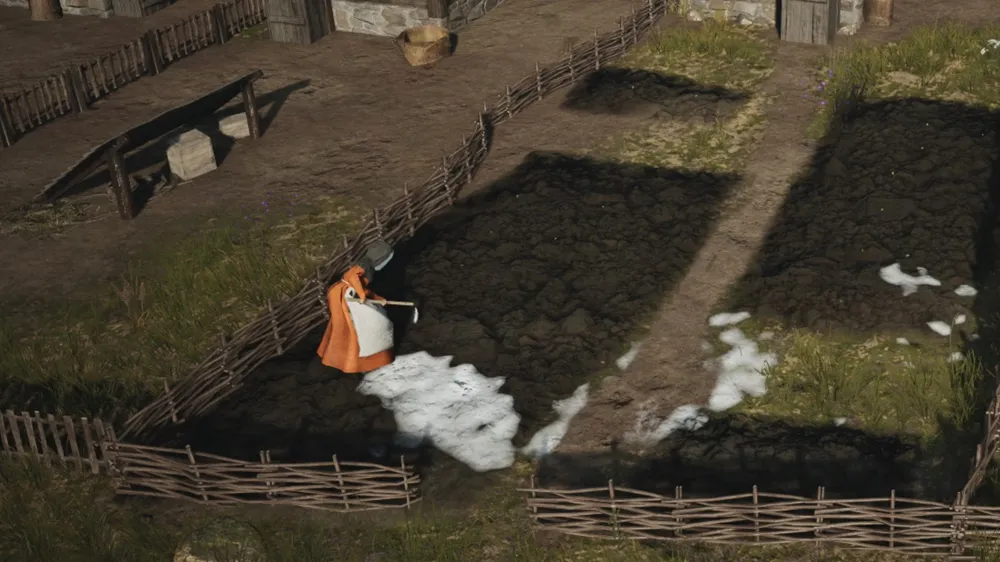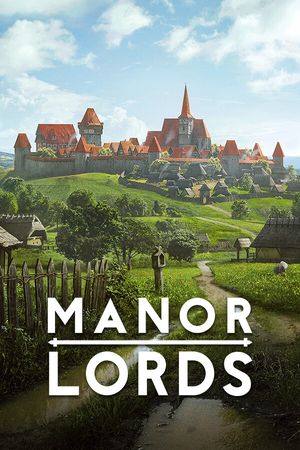
Even in early access, Manor Lords has a ton of build variety to get your teeth into. In fact, building out your settlement to be as self-reliant as possible is the best way to build a village worthy of lordship.
There's a lot to learn. So, consider this your go-to guide for what every building does in Manor Lords so you can build a town worth writing home about.
All Buildings in Manor Lords:

| Apiary | Build in wooded areas to generate Honey from bees. |
| Bloomery | Converts the Iron Ore resource into Iron Slabs, which can then be turned into Tools at the Smithy. |
| Burgage Plot | This is an adjustable housing plot with space for various extensions if you build a single house big enough. |
| Charcoal Kiln | Converts Firewood into Charcoal, which is used as a more potent fuel resource for your settlement. |
| Clay Furnace | Allows for the production of Clay Tiles from Clay, which are a key mid-game building resource. |
| Corpse Pit | Build a Corpse Pit to dispose of the bodies of raiders who are slain on your land. Failing to do so will upset your citizens due to the presence of rotting carcasses. |
| Communal Oven | Converts Flour into Bread, a tier 2 food source for your population. |
| Dyer's Workshop | Convert your basic food source, Berries, into valuable Dyes. |
Advertisement
| Farmhouse | Build as a central hub of operation for your farmers in nearby fields. It will also convert newly harvested Wheat into Grain. |
| Field | Create Fields to plant whatever crops you wish, from Wheat and Flax to Fallow and Barley. |
| Firewood Cart | This cart produces Firewood via automatic trade, meaning it costs Regional Wealth to maintain. |
| Food Cart | This cart produces Bread via automatic trade, meaning it costs Regional Wealth to maintain. |
| Forager Hut | Hut to gather nearby Berries for eating and producing Dyes. |
| Forester's Hut | Workers assigned here will plant new trees, key to maintaining heavily forested areas. |
| Granary | A storage building for protecting food resources from the elements. |
| Hitching Post | Use this to store Horses and Oxen, as well as recruit new livestock. It can be upgraded to increase livestock storage capacity. |
| Hunting Camp | Build to hunt nearby wildlife to generate Meat and Hides. Just be sure to set a hunting limit on the building so you don't over-hunt. |
| Logging Camp | Build to gather Timber from nearby trees, the most fundamental building resource. |
| Livestock Trading Post | Use to import new livestock, including your village's very first sheep! |
| Marketplace | Make room for market stalls that your citizens will set up to peddle wares. |
| Malthouse | Converts the Barley resource into Malt. |
| Manor | Your new home! Building a Manor allows you to set taxes, begin planning your castle layout, and more. |
| Mining Pit | Build to gather Clay or Iron Ore from their deposits. |
| Pack Station | Assign a Mule here to set up barter connections between two regions you control. |
| Pasture | This field provides space for livestock like Sheep to graze. |
| Sawpit | Build this nearby your Logging Camp to quickly convert Timber into Planks, a more advanced building resource. |
Advertisement
| Settlers Camp | Your first building upon settling a new region. |
| Sheep Farm | Build this to store and rear Sheep for Wool. |
| Shrine | For now, the Shrine is only cosmetic, though it is sure to serve a purpose in the future. |
| Smithy | This is where you'll be sending Iron Clabs to turn them into Tools. |
| Stonecutter Camp | Build to gather Stone from deposits. |
| Storehouse | Build for general storage. |
| Tannery | Converts Hides into Leather, a basic form of clothing and a crafting resource. |
| Tavern | The Tavern provides much-needed entertainment for your population, though will require Ale to function. Import the Ale if you can't craft it! |
| Trading Post | Use to import and export goods to traders who pass through your settlement. |
| Weaver Workshop | Converts Wool, Flax, or Linen into Yarn. |
| Well | A Well provides drinkable water to all nearby citizens and their homes. |
| Windmill | Converts Grain into Flour, ready for baking. |
| Woodcutter's Lodge | Woodcutters will harvest trees and convert them into Firewood. |
| Wooden Church | Provides Faith to your citizen's homes, crucial for upgrading their houses. |
All Burgage Extensions in Manor Lords:

| Apple Orchard | Build to produce Apples. |
| Armorer's Workshop | Produces basic armor like Helmets and Mail Armor, as well as Plate Armor. |
| Bakery Extension | Build to produce Bread. |
| Blacksmith's Workshop | Produces Tools, and weapons such as Sidearms, Spears, and Polearms. |
| Bowyer's Workshop | Build to produce Warbows. |
| Brewery | Build to produce Ale. |
| Chicken Coop | Provides a steady supply of Eggs. |
| Cobbler's Workshop | Provides a steady supply of Shoes. |
| Goat Shed | Provides a steady supply of Hides. |
| Joiner's Workshop | Produces Wooden Parts and Shields. |
| Tailor's Workshop | Produces Clothes, Cloaks, and Gambesons. |
| Vegetable Garden | Produces Vegetables, scaling up the bigger you build the yard. |
And that's every building you can build so far in Manor Lords in early access! There'll certainly be more to come, especially given we're currently missing a proper Brewery building for converting Malt into Ale. We'll be sure to update this article when that arrives.
For now, here are a few more guides for Manor Lords you might be interested in:
- 5 Key Mistakes to Avoid in Manor Lords
- A Beginner's Guide to Farming
- 10 Beginner Tips for Manor Lords
Advertisement










